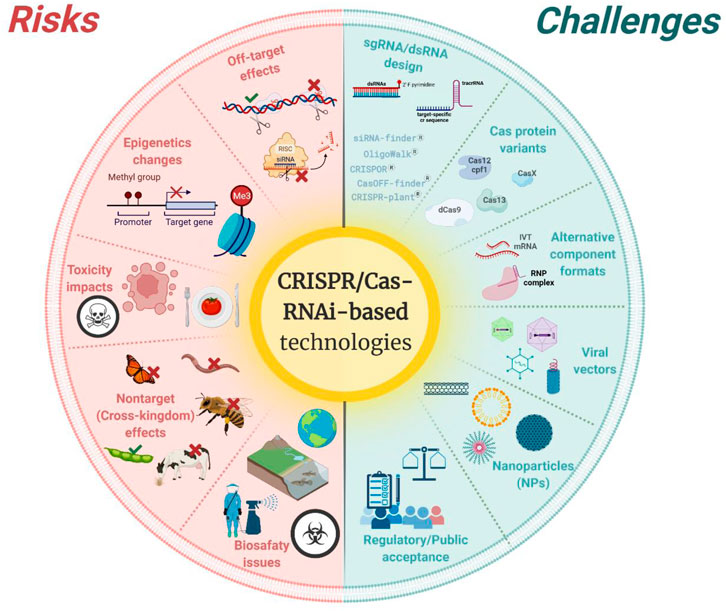Introduction: The breakthrough CRISPR (Clustered Regularly Interspaced Short Palindromic Repeats) technology has ushered in a new era of genetic engineering by allowing scientists to modify genes with unparalleled precision. As this innovative technology advances, the role of software development in supporting and improving CRISPR procedures becomes increasingly important. In this essay, we will look at the current status of software development in CRISPR technology, as well as the problems that lie ahead in the rapidly increasing field of genetic editing.
Software Development in CRISPR Technology:
Design and Planning:
One of the primary areas where software plays a vital role in CRISPR technology is in the design and planning phase. Software tools assist researchers in identifying target genes, designing guide RNA sequences, and predicting potential off-target effects. These tools ensure the efficiency and accuracy of CRISPR experiments by providing valuable insights into the genetic makeup of the target organism.
Data Analysis:
CRISPR experiments generate vast amounts of data, including DNA sequencing results and gene expression profiles. Software applications facilitate the analysis of this data, helping researchers interpret the outcomes of their experiments. Advanced algorithms can identify successful gene edits, assess off-target effects, and provide a comprehensive understanding of the genetic modifications made through CRISPR.
Automation and Robotics:
Automation is a key element in the success of CRISPR technology, and software development plays a pivotal role in creating control systems for automated processes. Robotics integrated with sophisticated software enables high-throughput screening, making it possible to conduct multiple CRISPR experiments simultaneously. This significantly accelerates the pace of genetic research and enhances experimental reproducibility.
User-Friendly Interfaces:
As CRISPR technology becomes more widely adopted across various scientific disciplines, the development of user-friendly interfaces is crucial. Software with intuitive interfaces allows researchers with diverse backgrounds to harness the power of CRISPR without extensive training. This democratization of access contributes to the widespread adoption of the technology.
Challenges for the Future:
Off-Target Effects:
Despite advancements, the challenge of minimizing off-target effects in CRISPR technology persists. Future software development must focus on improving algorithms for predicting and mitigating these off-target effects to ensure the precision and safety of genetic modifications.
Ethical and Regulatory Concerns:
The ethical implications of CRISPR technology, particularly in the context of human gene editing, raise significant concerns. Software developers need to collaborate with ethicists and policymakers to implement robust safeguards within the software, addressing ethical considerations and ensuring compliance with regulatory standards.
Enhanced Specificity and Efficiency:
Continuous efforts are required to enhance the specificity and efficiency of CRISPR-Cas systems. Software developers must work on refining algorithms to improve the accuracy of guide RNA design and minimize unintended genetic modifications, thereby increasing the overall efficiency of CRISPR processes.
Integration with Other Technologies:
Future developments in CRISPR technology may involve integration with other emerging technologies, such as artificial intelligence and machine learning. Software developers will need to create seamless interfaces to facilitate the integration of these technologies, unlocking new possibilities for genetic research.
Conclusion:
Software development is an indispensable aspect of the ongoing progress in CRISPR technology. As we navigate through the challenges of today and anticipate those of tomorrow, continued collaboration between genetic researchers and software developers is essential. The evolution of CRISPR technology holds great promise for advancing our understanding of genetics and treating genetic disorders, and robust software solutions will be at the forefront of this transformative journey.
What role does software play in the CRISPR technology process?
Answer: Software plays a crucial role in various aspects of CRISPR technology, including the design and planning phase, data analysis, automation of experiments, and providing user-friendly interfaces for researchers. It aids in optimizing guide RNA sequences, analyzing experimental data, and ensuring precision in genetic modifications.
How do software tools contribute to minimizing off-target effects in CRISPR experiments?
Answer: Software tools assist researchers in predicting and mitigating off-target effects in CRISPR experiments. Advanced algorithms analyze the target genome and guide RNA sequences to minimize unintended genetic modifications, ensuring the accuracy and safety of the CRISPR process.
What challenges does the CRISPR technology face in terms of ethical considerations, and how can software address them?
Answer: CRISPR technology raises ethical concerns, especially in the context of human gene editing. Software developers can address these concerns by collaborating with ethicists and policymakers to implement ethical safeguards within the software, ensuring responsible and compliant use of CRISPR technology.
How does automation, facilitated by software, contribute to the efficiency of CRISPR experiments?
Answer: Automation in CRISPR experiments, enabled by software-controlled robotics, accelerates the pace of genetic research. High-throughput screening, made possible by automation, allows researchers to conduct multiple experiments simultaneously, increasing efficiency and reproducibility in genetic editing processes.
What future developments are anticipated in software for CRISPR technology, particularly in integrating with other emerging technologies?
Answer: Future developments in CRISPR technology may involve integration with technologies like artificial intelligence and machine learning. Software developers are expected to work on creating seamless interfaces that facilitate the integration of these technologies, opening up new possibilities for advanced genetic research and applications.



